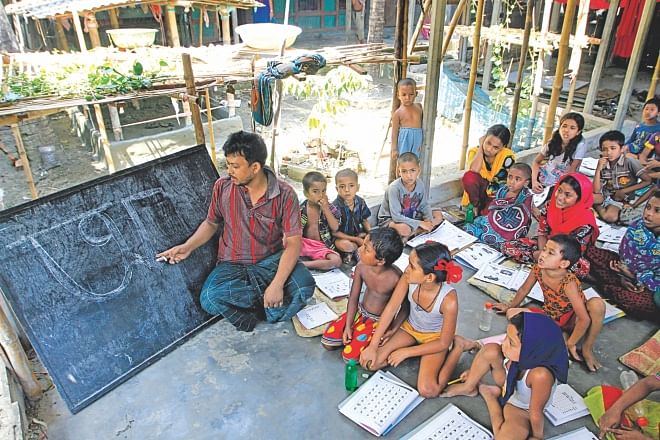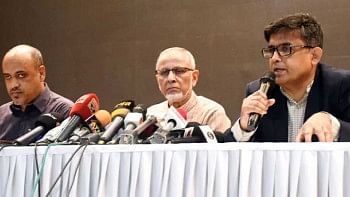Gypsies saying bye to rivers

There was a time when they would be found in rows of boats anchored on riverbanks. One morning they would be found huddled in tents at one place and somewhere else the next.
There was a time when these people, clad in their conspicuously different attire, could be spotted at marketplaces and other community hubs in towns and villages, selling trinkets, performing tricks or entertaining people with snake charming or monkey shows.
They were river gypsies, locally known as the Bede community.
However, time has changed and so has their lifestyle.
A floating, happy-go-lucky lifestyle no more attracts the people of this community.
Perhaps fitting themselves to the theory of "survival of the fittest", they choose regular professions rather than being engaged in the traditional ones.
The carpe diem lifestyle is yielding to a planned, secure one.

“It's a myth to us. We want domestic culture. We do not want to roam in jungles and catch snakes. We want to be educated so that we can go abroad [to make fortune],” said Razu Ahmed, a youth belonging to the gypsy community of Savar's Porabari, one of the largest gypsy habitats in the country.
After studying up to class nine, he now teaches pre-primary school in his community of around 10,000 people.
"Our traditional professions are losing their demand. People no more believe in our spiritual healing service. Snake charming has also lost its popularity," said Hasina Begum, who once lived a conventional gypsy life but now runs a grocery shop at Porabari.
Tawny flocks wearing turbans, earrings, necklaces and bright apparels would roam here and there, spending their daily income in amusement without worrying about the next day -- this was once an everyday picture of gypsy life. However, those days seem gone for good.

“It's true that we are losing our heritage. But you see the world has changed so much ... It is not possible for us to survive by retaining it [the gypsy culture]," said Ujjal Miah, 30, also of Porabari.
Ujjal used to roam with his gypsy father until he was 15 and became a grocery shop assistant. He has been running his own shop for the last seven years.
The gypsies now prefer living in concrete abodes equipped with modern amenities to dwelling on boats or in tents at stranger places.
“A quality boat costs about Tk 1 lakh. After wandering for three months in the Sundarbans, we could earn around Tk 50,000. But repairing the boat damaged by salty water would cost at least Tk 30,000. At the end of the day, it appears non-profitable," said Rahmat Miah, an around 60-year-old man living on the outskirts of the capital at Kamarpara, home to some 200 gypsy families.
Only two or three people of his area are still in the snake charming business, he added. And Rahmat now spends time relating tales from his good old days to youngsters.
Soud Khan, an elderly member of the gypsy community living in Louhajang, Munshiganj, said the young generation was no more interested in their ancestral profession as it did not have any prospects and social dignity.
“Only those who don't have any other skills are retaining the profession,” he said.
His observation was found somewhat right when Rezaul Ahmed of Porabari said, “Many people look down upon us. But we want to live with dignity like others in society".
Rezaul has completed graduation and is now looking for a "decent job".
According to the estimates of the Department of Social Services, there are around eight lakh people of the gypsy community in Bangladesh. The number is increasing.
However, the number of people retaining their hereditary professional identities is ever waning.
Concerned at this, Prof Meghna Guhathakurata, executive director of Research Initiative Bangladesh, which works on the gypsy community, thinks the government should help gypsies retain their culture by ensuring security for them, education for children and facilitating their trades.

 For all latest news, follow The Daily Star's Google News channel.
For all latest news, follow The Daily Star's Google News channel. 



Comments